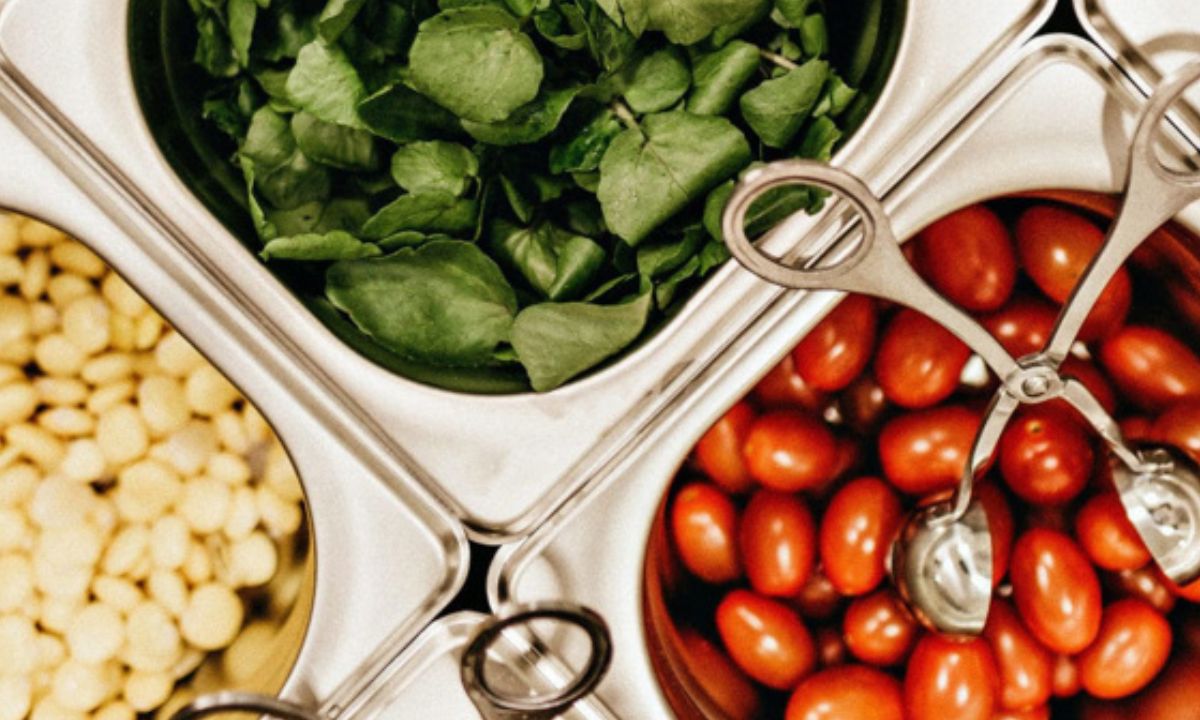In the food and beverage manufacturing industry, product safety, hygiene, and equipment reliability are non-negotiable. Every component that comes in contact with consumable products must meet strict sanitary standards to prevent contamination and maintain product integrity. Among the materials used in constructing processing and filling equipment, stainless steel stands out as the clear industry leader.
From small dairy bottling setups to large beverage filling plants, stainless steel is the preferred choice for tanks, valves, pipes, nozzles, and entire filling systems. But what makes stainless steel so essential to food-grade equipment design?
In this article, we’ll explore the key reasons stainless steel is the best material for food and beverage filling equipment, the different grades used, and how manufacturers like Micet leverage stainless steel to deliver hygienic, durable, and high-performance machinery.
When designing equipment for food and beverage applications, the choice of construction material directly influences:
- Product safety and contamination risk
- Equipment durability and maintenance costs
- Compliance with sanitary and regulatory standards
- The ability to handle high temperatures, cleaning agents, and acidic ingredients
Filling machines operate in environments that combine moisture, heat, pressure, and chemical exposure—conditions that can quickly corrode inferior materials like carbon steel or aluminum. Stainless steel, however, offers superior resistance to these challenges, making it the material of choice for food-grade applications.
Stainless steel is a corrosion-resistant alloy primarily made of iron, chromium, nickel, and carbon. Its defining feature is its chromium content, typically at least 10.5%. Chromium reacts with oxygen to form a thin, passive oxide film on the surface, which protects the metal from rust and corrosion.
This self-healing protective layer is what gives stainless steel its durability and hygienic properties—two essential traits for food and beverage manufacturing environments.
Not all stainless steels are the same. Different grades have unique compositions that determine their mechanical strength, corrosion resistance, and temperature tolerance. The two most commonly used grades in filling and processing equipment are:
- Contains approximately 18% chromium and 8% nickel
- Known as the standard “food-grade” stainless steel
- Excellent resistance to most food acids and cleaning chemicals
- Used in tanks, piping, valves, and basic filling machinery
- Contains 16% chromium, 10% nickel, and 2% molybdenum
- The addition of molybdenum enhances resistance to chlorides and harsh chemicals
- Commonly used in dairy, beverage, and high-acidity applications
- More expensive but ideal for long-term durability and sanitation
In short:
- 304 SS = General-purpose food applications
- 316 SS = Premium choice for acidic, salty, or chemical-heavy environments
Many leading equipment manufacturers, including Micet, use 316L stainless steel (low carbon version) for product-contact parts to ensure optimal hygiene and longevity.
Food and beverage production involves continuous exposure to water, organic acids (like citric or lactic acid), and cleaning solutions.
Unlike mild steel or aluminum, stainless steel resists corrosion and rust, ensuring your filling lines maintain sanitary conditions and extend operational lifespan.
This corrosion resistance is particularly vital in:
- Juice and soft drink filling (acidic content)
- Dairy and fermented products (lactic acid presence)
- Brewery environments (CO₂ and humidity)
- CIP (Clean-In-Place) cleaning cycles with caustic agents
Hygiene is the foundation of food safety. Stainless steel’s non-porous, smooth surface prevents bacteria, mold, and residue from sticking to the equipment. It also allows for quick and thorough cleaning—a critical factor in HACCP and GMP compliance.
Most food factories use CIP systems where high-temperature cleaning fluids are circulated through the equipment. Stainless steel easily withstands repeated exposure to hot water and cleaning chemicals without degrading.
In short:
- No surface cracks or crevices for bacteria to hide
- Compatible with steam sterilization and high-pressure washdowns
- Maintains smoothness even after years of operation
Filling machines operate for long hours under constant pressure, vibration, and mechanical stress. Stainless steel’s high tensile strength ensures that components like valves, nozzles, and tanks retain structural integrity even under heavy use.
When properly maintained, stainless steel filling systems can last 10–20 years or more, offering superior ROI compared to systems built from coated metals or plastics.
Food and beverage filling processes often involve temperature variations—from hot pasteurized liquids to chilled beverages. Stainless steel maintains its shape, strength, and corrosion resistance across a wide temperature range, typically from -40°C to over 200°C.
This makes it ideal for:
- Hot-fill bottling lines (e.g., sauces, dairy, oils)
- Cold beverage filling (e.g., beer, juices)
- Steam sterilization and drying processes
Stainless steel resists a wide range of chemicals, including:
- Detergents
- Alkaline cleaning agents
- Acids used in descaling
- Salts and organic acids in food
This chemical inertness ensures no reaction occurs between the equipment and the product—preserving taste, aroma, and nutritional quality.
Because stainless steel does not leach chemicals or metallic flavors into food or drinks, it’s fully compliant with FDA, EU, and NSF food safety regulations.
Other materials like aluminum or galvanized steel can oxidize, contaminating products with undesirable residues. Stainless steel maintains neutrality, ensuring pure product quality from start to finish.
In addition to performance, stainless steel’s clean, reflective finish gives a professional look to processing plants. The bright surface also makes it easier to detect dirt, spills, or residue during inspections—further supporting sanitation protocols.
Stainless steel is 100% recyclable, aligning with the food and beverage industry’s growing sustainability goals.
At the end of its life cycle, it can be melted and reused without losing its core properties, minimizing environmental impact.
Manufacturers using stainless steel equipment not only benefit from long-term durability but also demonstrate commitment to eco-friendly operations.
Property Stainless Steel (304/316) Aluminum Mild Steel (Carbon Steel) Plastic/Polymer Corrosion Resistance Excellent Poor with acidic liquids Poor Moderate Food Safety Excellent Risk of oxidation Not food-safe Varies Durability Very High Moderate High but rusts easily Low (wears quickly) Cleaning Compatibility Excellent with hot water & chemicals Limited Poor Limited Heat Resistance High Medium High Low Longevity 10–20 years 3–5 years 5–7 years 1–3 years Recyclability 100% Partial 100% Low
The table makes one thing clear: stainless steel dominates across every critical category for food and beverage processing applications.
Used in breweries, wineries, and soft drink plants for:
- Fermentation and storage tanks
- Bottle and can filling equipment
- Clean-in-place (CIP) systems
- Piping, pumps, and valves
Used for milk, yogurt, and sauce production due to its resistance to lactic acid and ease of cleaning.
Handles thick and corrosive materials like ketchup, soy sauce, or vinegar without degrading or contaminating the product.
Stainless steel resists mineral scaling and bacterial growth, maintaining high purity standards.
To maximize equipment lifespan and performance:
- Clean regularly using non-abrasive detergents.
- Avoid prolonged exposure to chlorine-based cleaners (use recommended concentrations).
- Rinse thoroughly after cleaning to remove chemical residues.
- Inspect welds and joints for residue buildup.
- Polish periodically to maintain surface smoothness and corrosion protection.
Following proper maintenance ensures stainless steel’s passive layer remains intact, preventing corrosion and contamination risks.
High-quality stainless steel filling equipment typically complies with:
- FDA (Food and Drug Administration)
- 3-A Sanitary Standards
- EHEDG (European Hygienic Engineering & Design Group)
- GMP (Good Manufacturing Practices)
- ISO 9001 for manufacturing quality control
Micet designs all food and beverage filling systems with these certifications in mind, ensuring global compliance and safety.
As a professional manufacturer of food and beverage processing systems, Micet prioritizes hygiene, safety, and performance in every machine it builds.
- Premium Materials: All product-contact parts are made from 304 or 316L stainless steel for superior corrosion resistance.
- Hygienic Design: Smooth, polished surfaces with sanitary welds and fittings minimize bacterial growth.
- Durable Construction: Heavy-duty frames designed for 24/7 operation in demanding environments.
- Easy Maintenance: Tool-free disassembly for cleaning, CIP integration, and low upkeep costs.
- Customization: Tailored designs for different liquids—water, juice, beer, dairy, oil, or sauces.
- Automation Options: Available in both semi-automatic and fully automatic versions with PLC control and touchscreen interface.
By combining precision engineering and premium stainless steel materials, Micet delivers filling solutions that meet the highest global standards for safety, efficiency, and longevity.
👉 Learn more about Micet’s stainless steel filling and packaging equipment at MicetCraft.com and discover how durable, hygienic machinery can transform your production line.
304 stainless steel is the most common food-grade material, suitable for general applications. 316 stainless steel, which includes molybdenum, offers better resistance to chlorides, salts, and acidic environments—making it ideal for beverages, dairy, and chemical-based liquids.
With proper maintenance, stainless steel equipment can last 10 to 20 years or more. Its corrosion resistance, structural strength, and easy-to-clean surface make it a long-term investment that outperforms alternatives like aluminum or coated metals.Taba Squishy
Yes. Stainless steel retains its integrity under both high and low temperatures, making it perfect for hot-fill processes (sauces, syrups) and cold-fill operations (beer, juice, milk) without warping or degrading.
READ ALSO: бишкоти ди прато: More Than a Biscuit, A Taste of Tuscan Soul

